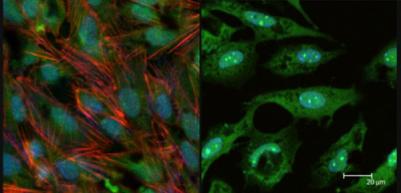Localized hyperthermia is a solid tumor treatment that uses heat (above 43 degrees Celsius) to boost the cytotoxic effects of chemotherapy or radiotherapy and also increases the permeability of tumor cells to drugs. Graphene Oxide is a possible agent because it absorbs light in the near-infrared range.

Researchers from Portugal and Spain studied in vitro laser dosage and cell irradiation exposure time. It was discovered that cell culture temperature (after irradiating cells that had taken up graphene oxide) increases preferentially with laser power rather than with exposure time. Moreover, when the laser power is increased, cell necrosis leads to an increase of cytokine release to the surrounding medium.
A couple of months ago, Grafoid and ProScan Rx Pharma announced a new joint-venture partnership to develop MesoGraf graphene-based nanotechnology platform for the precise targeting and thermal eradication of solid cancer tumors. They established a new company called Calevia to handle this development.
Graphene Oxide can also be used as an anti-cancer drug carrier, and GO-based chips are being developed to enable biopsy-free early cancer diagnosis.

